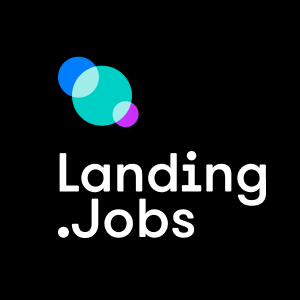Outcomes are not always perceptible as the impact measurement can be quite subjective, but the importance of investing in Learning & Development is almost unquestionable. As relevant as it is complex, this matter must be seen as one of the main issues in Human Resources, but in order to achieve an effective strategy, it is essential to change mentalities.
“Learning & Development is the central pillar of any company’s management. It is a risk, especially because it represents cost and it is very difficult to demonstrate a ROI [Return on Investment] of that cost”, explains Kalpna Kirtikumar, People Director at Talkdesk. “The mindset cannot always be about the return on investment, it must be about learning, agility and constant improvement”, she continues, considering that it is this change of mentalities that is still lacking in many companies regarding Learning & Development.
Sandra Rebelo, Learning & Development Director at Galp, says that, currently, this is the biggest challenge companies are facing. For Sandra, there is no doubt that it is essential to continue to invest in this subject, despite agreeing that assessing its impact is not a simple task.
“There are actions that are easier to measure than others, but I think it’s even more interesting to evaluate effectiveness than ROI. There are things I can’t measure with numbers, but I can, in some way, see the impact they have. I get a more subjective evaluation”, she states.
While Sandra admits that the system used at Galp is not “bulletproof”, she does not doubt the importance of continuing to do this evaluation work. “What we have is better than nothing”, she concludes.
Measuring motivation, engagement and retention
Feedback surveys, skill assessments and turnover rate are just some of the mechanisms implemented by companies to measure the impact of their Learning & Development strategies. Tb.lx by Daimler Trucks & Buses chooses to collect feedback on the impact of the training after each course session.
“This way, we can realize if people start to implement what they learnt in the courses, whether these are technical or behavioural”, points Sara Gorjão, HR and Talent Manager at tb.lx.
At Talkdesk, one of the measurement procedures is related to the team evaluation, which mainly goes through the assessment and evolution of skills, goal achievements and talent potential, reflected in maturity and ability to circulate within the organizational structure.
Adding to this, Talkdesk also measures retention rate results. “If I’m growing, namely in areas that I had not previously planned to, but that I see that I can cover, my will to stay in the company is much greater because I see a path forward”, explains Kalpna Kirtikumar.
LinkedIn’s report on Workplace Learning Trends proves it, revealing that more than 90% of employees stay longer in companies that are willing to invest in their professional development.
Talent retention, motivation and engagement are, above all, the results obtained from a strategy focused on employee training and development. “I can afford to pay people for coding, but I cannot pay them for wanting to do more and better. That is priceless”, says Talkdesk’s People Director.
Defining a plan. Training, promotion or mobility?
The evaluation or measurement of results is the last step. Regarding training, the three companies report that demand has increased in recent months. “It is the workers themselves who ask for training nowadays”, Sandra Rebelo remarks.
Reports on the subject also confirm this trend. According to the World Economic Forum’s “The Future of Jobs Report”, more than half of employees expect to learn and improve their skills. In many cases, confinement (due to Covid-19) was used precisely to develop and acquire new skills.
The mechanisms used for learning have never been more diverse, from classroom training to webinars, through virtual team buildings, support groups and talks where the speakers are the company’s own employees making use of a more informal training perspective.
Understanding that employee development should be perceived as a set of actions, in which training is just one of them, Galp chose to remove the word training from its guidelines and actions, replacing it with the word learning. “The development of a person can be achieved by an MBA, a promotion, by moving to another area or even to another country”, says the Learning & Development Director.
To outline the development plan of each employee, Galp applies a People Days framework, which are annual moments in which an analysis is made of all the company’s employees where “everyone has the opportunity to give their opinion about everyone”, she states.
Performance and career are the main axis of the matrix, in an assessment that aims to keep away from labels. “It is not a matter of cataloguing people on their potential but understanding whether that person is on a career growth trajectory, depth or if is already at a point where something has to happen. That person may have to be promoted or take on a bigger challenge so that we don’t run the risk of them looking outside the organization” adds Galp’s Learning & Development Director.
A time to listen and guide employees
At tb.lx there is also an annual moment to outline the organisation’s strategy that is shared with employees. “We ask people what their vision is in a timeframe of two to four years, we question the motivation behind that vision, what they need to develop to achieve that vision and, moreover, we ask them to name a person they want to take with them on that journey. Essentially, a person with whom they want to share that responsibility with”, explains Sara Gorjão. “The training plan is not only a duty of Human Resources, or only of the employee. It is the responsibility of the entire organisation” she claims.
Monitoring and coaching are crucial in this learning and development process. For Kalpna Kirtikumar, 1-on-1 moments are critical and, despite admitting that nowadays these meetings are very oriented to ongoing projects, by solving problems and unblocking tasks, she considers that dedicating time to listen to the employee and understand what their expectations, motivations and interests are can determine their development.
“In the last conversation I had with a member of my team on this topic, I told them that their career progression was dependent upon formal classroom training. If we hadn’t had this conversation and if that person did not tell me what their desired career path was, I would not have had the opportunity to help them”, she says, adding that coaching is fundamental in the way of dealing with others and motivating them to follow a development plan.
We are makers of futures!
https://future.works/






0 Comments